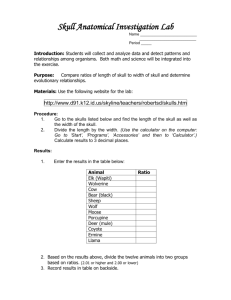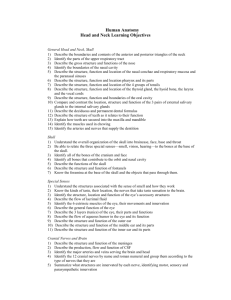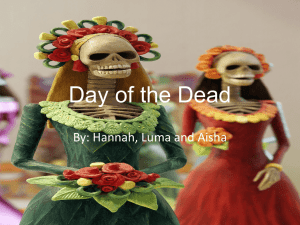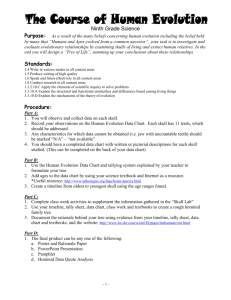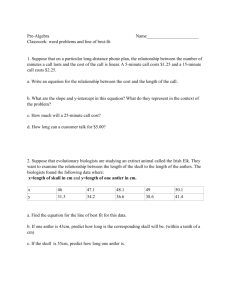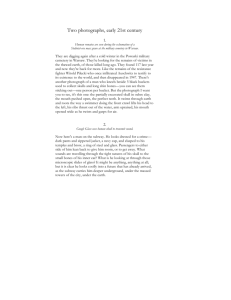Skulls and Brains Lab: Using the Skull Collection Website
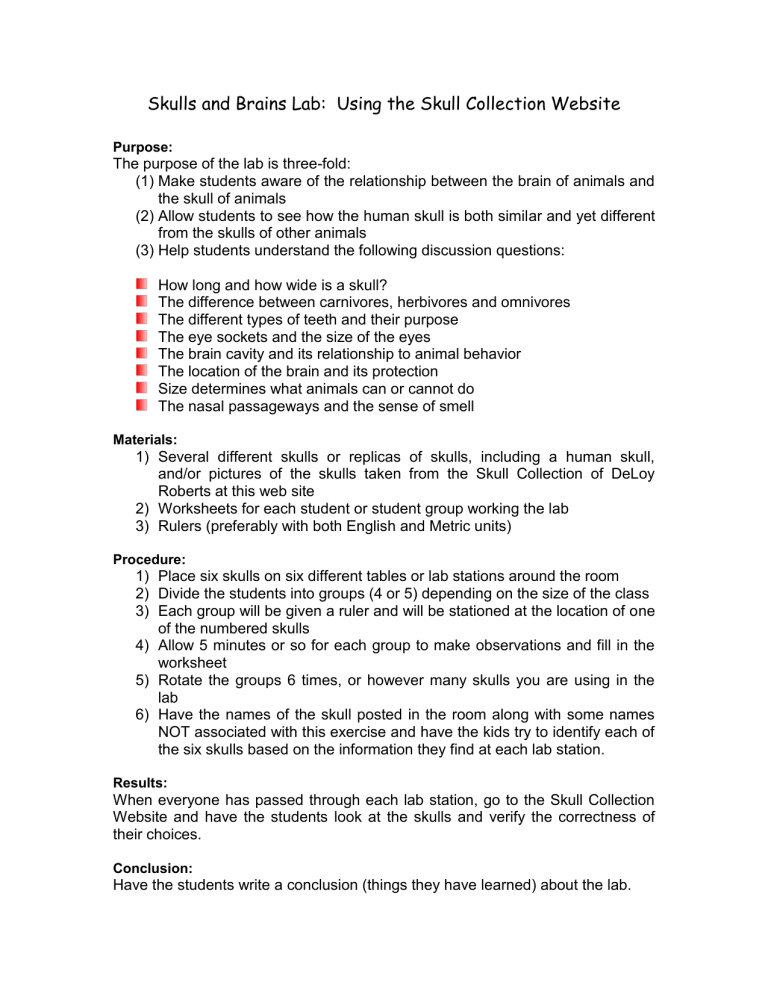
Skulls and Brains Lab: Using the Skull Collection Website
Purpose:
The purpose of the lab is three-fold:
(1) Make students aware of the relationship between the brain of animals and the skull of animals
(2) Allow students to see how the human skull is both similar and yet different from the skulls of other animals
(3) Help students understand the following discussion questions:
How long and how wide is a skull?
The difference between carnivores, herbivores and omnivores
The different types of teeth and their purpose
The eye sockets and the size of the eyes
The brain cavity and its relationship to animal behavior
The location of the brain and its protection
Size determines what animals can or cannot do
The nasal passageways and the sense of smell
Materials:
1) Several different skulls or replicas of skulls, including a human skull, and/or pictures of the skulls taken from the Skull Collection of DeLoy
Roberts at this web site
2) Worksheets for each student or student group working the lab
3) Rulers (preferably with both English and Metric units)
Procedure:
1) Place six skulls on six different tables or lab stations around the room
2) Divide the students into groups (4 or 5) depending on the size of the class
3) Each group will be given a ruler and will be stationed at the location of one of the numbered skulls
4) Allow 5 minutes or so for each group to make observations and fill in the worksheet
5) Rotate the groups 6 times, or however many skulls you are using in the lab
6) Have the names of the skull posted in the room along with some names
NOT associated with this exercise and have the kids try to identify each of the six skulls based on the information they find at each lab station.
Results:
When everyone has passed through each lab station, go to the Skull Collection
Website and have the students look at the skulls and verify the correctness of their choices.
Conclusion:
Have the students write a conclusion (things they have learned) about the lab.
Skulls and Brains Lab
Names _______________________
Animal Skull #1
_______________________
_______________________
_______________________
Length _______ Width _______ We think this is a _______________ skull.
Describe the size of the eye socket ___________________________________
Describe the size of the brain cavity ___________________________________
Describe the nasal passageways _____________________________________
Describe the teeth _________________________________________________
If possible, count (or estimate) the number of teeth _______
Circle the correct choice: Herbivore Carnivore Omnivore
In the space below, describe this animal based upon the skull:
Animal Skull #2
Length _______ Width _______ We think this is a _______________ skull.
Describe the size of the eye socket ___________________________________
Describe the size of the brain cavity ___________________________________
Describe the nasal passageways _____________________________________
Describe the teeth _________________________________________________
If possible, count (or estimate) the number of teeth _______
Circle the correct choice: Herbivore Carnivore Omnivore
In the space below, describe this animal based upon the skull:
Animal Skull #3
Length _______ Width _______ We think this is a _______________ skull.
Describe the size of the eye socket ___________________________________
Describe the size of the brain cavity ___________________________________
Describe the nasal passageways _____________________________________
Describe the teeth _________________________________________________
If possible, count (or estimate) the number of teeth _______
Circle the correct choice: Herbivore Carnivore Omnivore
In the space below, describe this animal based upon the skull:
Animal Skull #4
Length _______ Width _______ We think this is a _______________ skull.
Describe the size of the eye socket ____________________________________
Describe the size of the brain cavity ___________________________________
Describe the nasal passageways _____________________________________
Describe the teeth _________________________________________________
If possible, count (or estimate) the number of teeth _______
Circle the correct choice: Herbivore Carnivore Omnivore
In the space below, describe this animal based upon the skull:
Animal Skull #5
Length _______ Width _______ We think this is a _______________ skull.
Describe the size of the eye socket ___________________________________
Describe the size of the brain cavity ___________________________________
Describe the nasal passageways _____________________________________
Describe the teeth _________________________________________________
If possible, count (or estimate) the number of teeth _______
Circle the correct choice: Herbivore Carnivore Omnivore
In the space below, describe this animal based upon the skull:
Animal Skull #6
Length _______ Width _______ We think this is a _______________ skull.
Describe the size of the eye socket ___________________________________
Describe the size of the brain cavity ___________________________________
Describe the nasal passageways _____________________________________
Describe the teeth _________________________________________________
If possible, count (or estimate) the number of teeth _______
Circle the correct choice: Herbivore Carnivore Omnivore
In the space below, describe this animal based upon the skull:
How is the human skull different from the other skulls? How is it similar?
